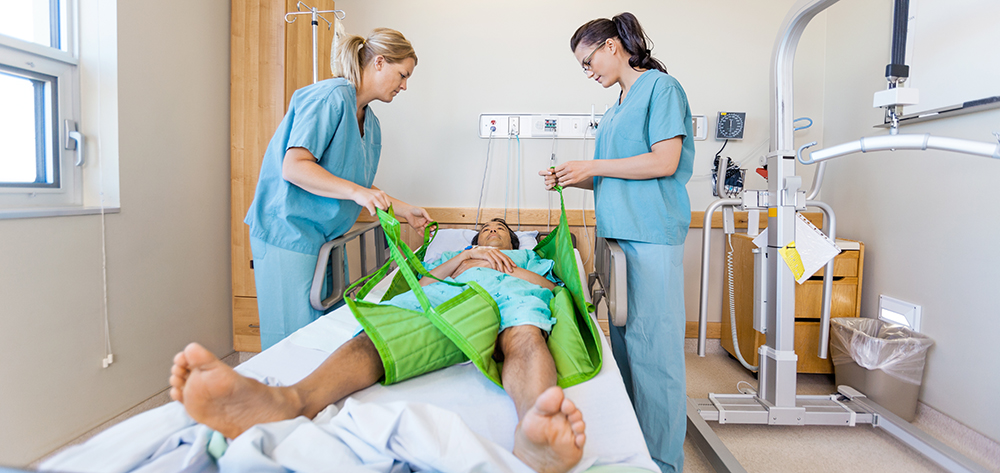Turning programs are essential to prevent and promote healing of pressure ulcers and to prevent the many negative effects of immobility, ranging from constipation to respiratory infections. However, turning a patient often puts a caregiver’s body in an awkward position, which can lead to musculoskeletal damage, especially back injuries.
According to the U.S. Bureau of Labor Statistics, healthcare workers suffer the highest rate of musculoskeletal disorders for all occupational groups and more than seven times the average rate for all occupations. Direct caregivers are the group most likely to experience musculoskeletal injuries. During turning tasks, excessive forces are imposed on the caregiver’s musculoskeletal structure due to the external load of the patient and the caregiver’s form and position during the task. Fragala and Fragala found that turning patients in bed is one of the highest-risk activities that lead to low back pain.
Reducing the risk
Using safe patient handling equipment reduces the force exerted on musculoskeletal structures and lowers the risk of injury to the caregiver. Leaders should consider investing in the following safe patient handling equipment as part of the organization’s comprehensive turning program:
• grab bars and/or a trapeze on the bed so the patient can participate or become independent in turning
• friction-reducing aids to reduce the force required to turn patients
• mechanical lifts with
• full-body turning/repositioning slings to remove the workload of the caregiver
• a small repositioning sling and a limb lift sling to position and hold a patient in place during care or a dressing change to a wound. (See Lifting aids.)
Investment in this equipment can help reduce costs associated with musculo – skeletal disorders in caregivers.
Caregivers should choose the right equipment for the task at hand and use the equipment appropriately. They should remove slings or friction-reducing aids when the task is complete, so they don’t hinder the pressure redistribution properties of the support surface.
Making safe patient handling equipment available encourages caregivers to comply with turning protocols and leads to better outcomes for both patients and caregivers.
Jeri Lundgren is the president of Senior Providers Resource in Cape Coral, Florida. She can be contacted at [email protected].
Selected reference
Fragala G, Fragala, M. Improving the safety of patient turning and repositioning tasks for caregivers. Workplace Health Saf. 2014;62(7):268-73.
Access more information about selecting equipment from the Association of Rehabilitation Nurses.







